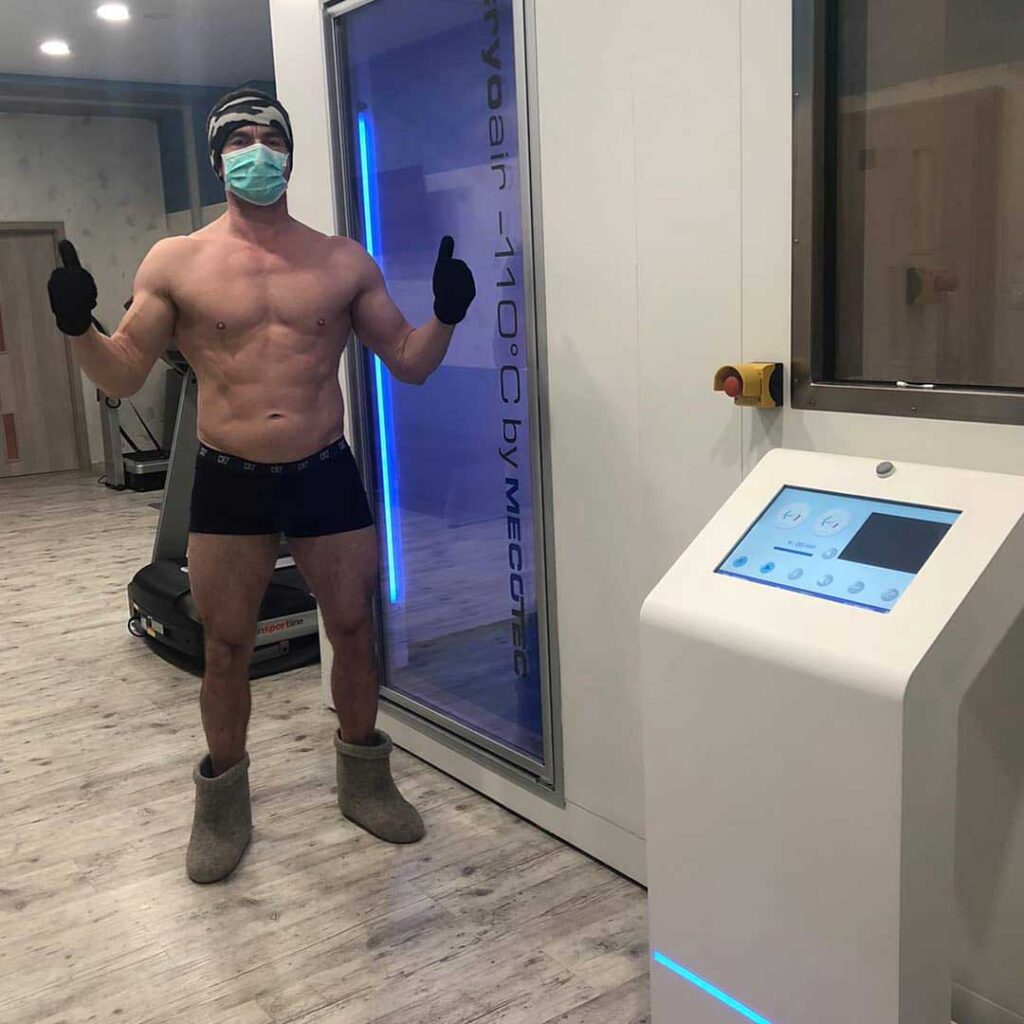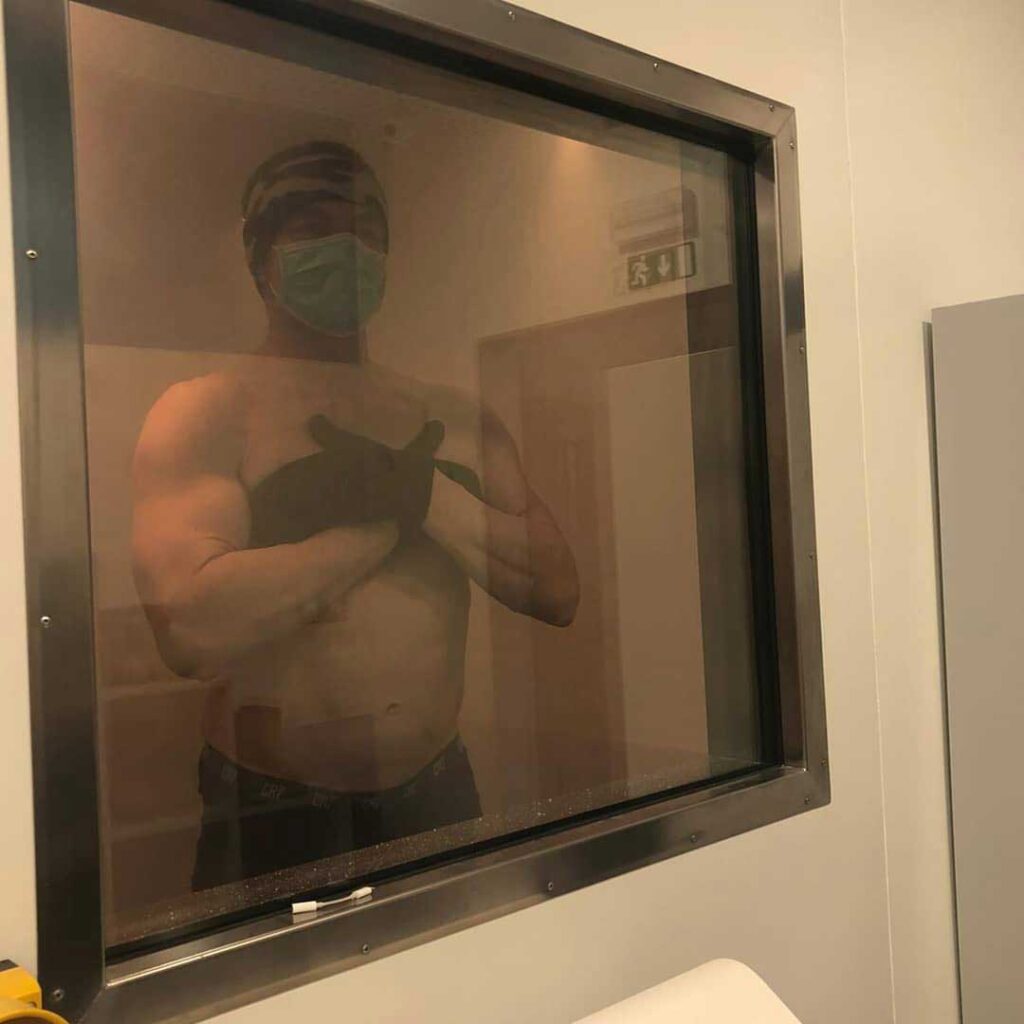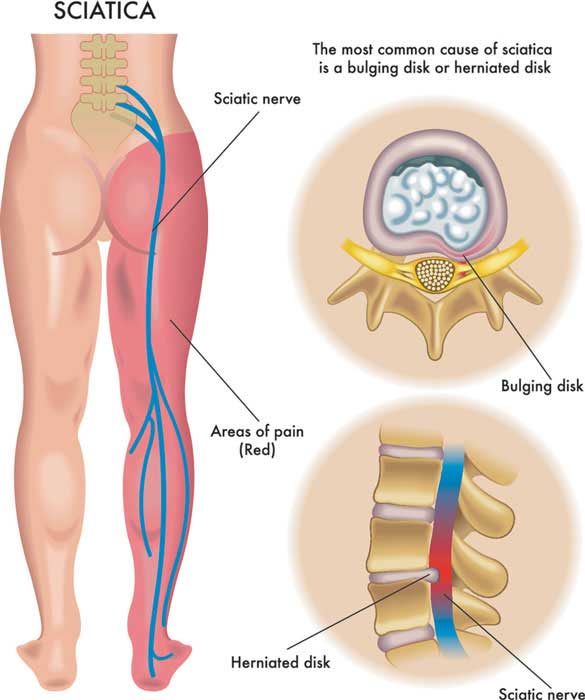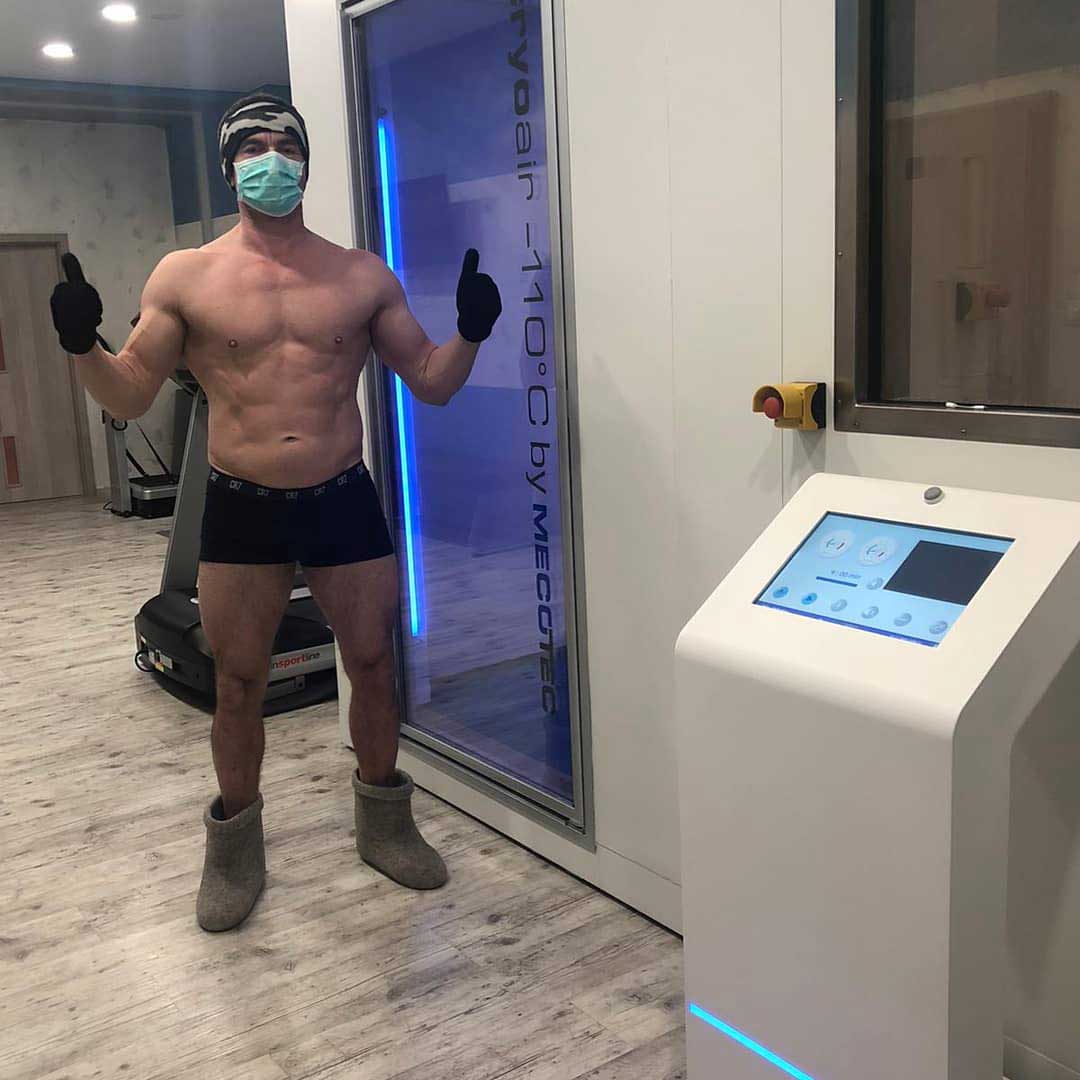Can cryotherapy help with lower back pain?
I am sure many of you will have heard of cold water immersion baths and taking a cold shower in the mornings for health benefits.
Athletes would often get into an ice bath after training in an attempt to reduce their recovery time and improve their performance.
More recently though the use of cryotherapy has become more popular both from athletes and the general population in the search for health benefits.
Today I would like to take a look at cryotherapy and its benefits for those suffering from lower back pain, what does the literature say and would it be something I would recommend.
What is cryotherapy?
First up for those that do not know what exactly is cryotherapy?
Cryotherapy literally means cold therapy and it is where the body is exposed to extremely low temperatures for several minutes.
It can be localized where they use a device that looks like a large hoover and extremely cold air is blown onto a specific area of the body.

It can also be whole body and this can be broken into a bod pod type device where you are enclosed in a device with only your head sticking out or it can be an actual walk in freezer type of set up where you enter and spend the allotted time inside.

You typically spend anywhere from 2 to 4 minutes in the chambers at a temperature of minus 200 to minus 300 Fahrenheit or minus 120 to minus 180 celcius…AKA DAM COLD!!
Does cryotherapy help relieve pain?
Much of the research into cryotherapy has focused on athletes and the ability to recover from training and/or post-operative management and healing time.
Pain reduction however is what we are looking for and whether it can help back pain sufferers.
In 2020 researchers penned a review looking at cryotherapy and its ability to manage chronic pain.
They looked at 25 studies including 22 random controlled trials which focused on both local and whole body cryotherapy techniques.
The studies looked at pain from many conditions such as fibromyalgia, osteoarthritis, rheumatoid arthritis and ankylosing spondylitis.
In most of the studies pain was measured with the use of a patient questionnaire given pre and post cryotherapy treatment.
The majority of studies looked at the use of both local and whole body cryotherapy and both brought about significant reductions in pain.
It was noted that most of the benefits with whole body cryotherapy happen at a minimum temparature of minus 166 Fahrenheit or minus 110 Celcius.
This is something to be aware of if you are contemplating using this type of modality for pain relief.
Can cryotherapy help with back pain?
So it does appear that cryotherapy can help alleviate pain but can it help those specifically with lower back pain, chronic back pain, sciatica etc. The area we are most concerned about.
There have been some studies looking directly at some of these areas and just last year researchers looked at whole body cryotherapy and chronic lower back pain.
They found that after 20 sessions of whole body cryotherapy over the course of 5 weeks pain was significantly reduced in the 41 participants. This was recorded by use of pain questionnaires administered pre and post-study.
An earlier study in 2013 looked at pain and lumbar spine mobility in 92 male subjects aged between 65 and 75.
One half was treated with whole body cryotherapy prior to an exercise therapy program whilst the other group only performed the exercise therapy.
The study took place over 3 weeks and the therapy was delivered 5 times a week.
The results from the study showed that the group receiving the cryotherapy session prior to their exercise therapy reported significantly less pain and showed greater lumbar spine mobility.
It has to be noted that no apparent follow up was performed in either of those studies so we don’t know if the pain reduction continued after the intervention was over.

There were no direct studies on PubMed looking at cryotherapy and sciatica nerve pain relief but we could hypothesise that it could help once we understand the physiology of the pain relief mechanism which I will move on to in the next section.
When we look at the research as a whole in regard to pain relief it does seem to offer a significant benefit in the reduction of pain but more research is obviously needed to ascertain if this pain reduction lasts long term.
How does cryotherapy bring pain relief?
Now that we have established that pain reduction does occur what is the mechanism behind it.
Cryotherapy is thought to utilize several different cellular and physiological mechanisms that contribute to its overall effect
These mechanisms are thought to occur through the reduction of edema (swelling) and inflammation, oxidative stress, and nerve conduction velocity (speed of transmission) in pain fibers.
Reduces Edema
Edema and cytokines are key inflammatory markers used to assess the effects of treatments on inflammation.
Edema, the medical term for swelling, is one of the main signs of inflammation, caused by vascular changes and increased permeability that allows fluid to enter the extravascular space.

This increases the pressure in the extravascular space and this space often leads to mechanical stimulation and the occurrence of pain.
Cryotherapy is thought to decrease swelling by a combination of decreasing vascular permeability and reducing both arterial and soft tissue blood flow to the affected areas.
Reduces Inflammation
The anti-inflammatory effects of cryotherapy have been confirmed in a variety of studies that demonstrate a reduction in inflammatory markers, such as C-reactive protein (CRP), cytokines such as Interleukin 1 and Interleukin 6 and upregulation of anti-inflammatory cytokine Interleukin 10.

The overall result being a general shift toward a noninflammatory state that promotes tissue healing rather than tissue destruction.
Reduces Oxidative Stress
Oxidative stress has been associated with many human diseases including but not limited to cardiovascular diseases, neurodegenerative diseases, cancer, and rheumatoid arthritis.

Oxidative stress can be a distinguishing feature of autoimmune diseases, leading to more inflammation and adding to the constant pain a patient is in.
Cryotherapy has been shown to reduce oxidative stress by increasing total antioxidant status and therefore reducing the overall amount of inflammation.
Reduces Nerve Conduction Velocity
A reduction in the nerve conduction velocity in the motor and sensory nerves is another proposed mechanism of cryotherapy pain relief.
Cryotherapy appears to reduce the nerve membrane current and decreases the rate of impulse transmission as well as increasing both pain threshold and pain tolerance.
In other words, cryotherapy decreases the pain signals sent by the sensory nerves back to the brain leading to us feeling less pain and being able to tolerate more pain.

Although I couldn’t find a study on PubMed this has implications for dealing with sciatica pain relief and one that definitely needs exploring.
Should you try cryotherapy for your back pain?
I think anyone suffering from lower back/sciatica nerve pain should exhaust all conservative modalities before considering any other drastic measure.
Cryotherapy is an affordable low risk modality that has shown significant pain relief along with many other benefits across a wide range of studied individuals.
Like anything though you have to give it time and there appears to be a minimum frequency of 3 times per week and if opting for the whole body cryotherapy then a minimum temperature of minus 166 Fahrenheit or minus 110 Celcius is desired.
If you have access to this modality I would suggest you give it a try and if you have any questions on it please hit me up and I will see if I can help.
If you are seriously struggling with lower back/sciatica nerve pain then you should take up my Lower Back Pain Recovery Challenge today.
A 21 day video course lead by myself where I take you through a daily guided routine leading to a healthier more pain free life for you.
Share the love people!

